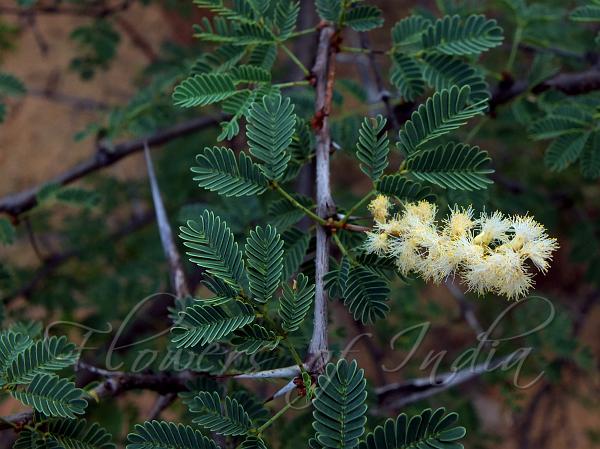|
| Robber Thorn |
|

|

| File size | 668377 |
| Original date | 10/25/15 3:22 PM |
| Resolution | 2048 x 1536 |
| Flash | Flash did not fire, auto |
| Focal length | 9.6mm |
| Exposure time | 1/100s |
| Aperture | 5.6 |
| Focus Distance | |
| Metering Mode | Average |
| Camera make | FUJIFILM |
| Camera model | X-S1 |
| Sensor type | OneChipColorArea |
|
|
|
|
Photo: |
Botanical name: Vachellia horrida subsp. horrida Family: Mimosaceae (Touch-me-not family)
Synonyms: Acacia latronum, Mimosa latronum, Acacia dumosa
Synonyms: Acacia latronum, Mimosa latronum, Acacia dumosa
Robber-Thorn is a shrub or small tree with
spreading crown; branchlets black or brownish, round, hairless. Spines
occur in pairs, 0.5-6 cm long, often fused at base, straight,
ivory-white or often brown, the larger ones hollow and horn-like.
Because of its huge thorns, it makes an excellent protective hedge, and
that is probably the origin of its common name Robber Thorn. Leaves are
double compound: axis 1-3 cm long, slender, sparsely yellowish finely
velvet-hairy to hairless; leaf-stalks 0.5-1 cm long; glands solitary,
more or less midway or occasionally near the base of leaf-stalk,
circular, stalkless, 0.5-0.8 mm diameter; pinnae 2-5 pairs, 0.5-1.5 cm
long, sparsely finely velvet-hairy to hairless; leaflets 6-15 pairs,
nearly stalkless, linear or oblong, 0.8-4 x 0.4-1 mm, subequal or
rounded at base, blunt to rounded or subacture at tip, firmly
chartaceous, hairless, greenish or brown when dry; main vein prominent;
nervules obscure. Inflorescences: in leaf-axils, spicate, solitary or
2-together, hairless, 2-5.5 mm long; flower-cluster-stalks 0.5-1 cm
long. Flowers are creamy, white or yellowish, fragrant. Calyx is
bell-shaped, 1-2 x 1.5-1.8 mm, hairless; teeth triangular or ovate,
0.5-0.8 mm long. Flowers are 2-3 mm long, hairless; petals 4-5,
triangular, 1-1.5 x 0.6-1 mm. Stamens 3-4.5 mm long. Ovary is nearly
stalkless, subspherical; about 1.5 mm diameter, style 3-3.5 mm long.
Pods are sickle-shaped-oblong, 2.5-4.5 x 1-2 cm, flattened, inflated,
straight to curved, unlobed, thin-walled, rounded to blunt at tip,
hairless, prominently and transversely veined, dark reddish-brown or
blackish when dry, stipe about 5 mm long; seeds 1-4, ovate to nearly
round, flattened, 4.5-5.5 mm diameter. Robber Thorn is native to South
India and SE Asia. Flowering: July-May.
| Identification credit: Siddarth Machado | Photographed in Anantapur District, Andhra Pradesh. |
• Is this flower misidentified? If yes,